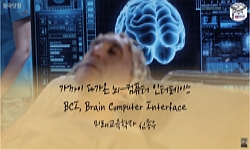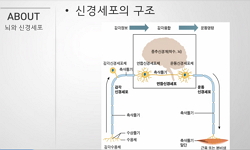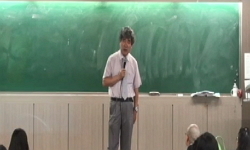이 글은 청소년들의 자기 조절 능력 개발을 위한 제안을 신경과학적 입장에서 탐구하였다. 청소년기는 어른이 되어 가고 있는 중요한 변화의 시기이다. 청소년들의 심리적, 신체적, 그리고 ...
http://chineseinput.net/에서 pinyin(병음)방식으로 중국어를 변환할 수 있습니다.
변환된 중국어를 복사하여 사용하시면 됩니다.
- 中文 을 입력하시려면 zhongwen을 입력하시고 space를누르시면됩니다.
- 北京 을 입력하시려면 beijing을 입력하시고 space를 누르시면 됩니다.
https://www.riss.kr/link?id=A105598580
-
저자
최주혜 (감리교신학대학교)

- 발행기관
- 학술지명
- 권호사항
-
발행연도
2018
-
작성언어
Korean
-
주제어
청소년 ; 자기 조절 능력 ; 뇌 ; 전두엽 ; 종교적 실천 ; Adolescence ; Self-regulation ; Brain ; Frontal Cortex ; Religious practice
-
등재정보
KCI등재
-
자료형태
학술저널
-
수록면
331-356(26쪽)
-
KCI 피인용횟수
9
- DOI식별코드
- 제공처
- 소장기관
-
0
상세조회 -
0
다운로드
부가정보
국문 초록 (Abstract)
이 글은 청소년들의 자기 조절 능력 개발을 위한 제안을 신경과학적 입장에서 탐구하였다. 청소년기는 어른이 되어 가고 있는 중요한 변화의 시기이다. 청소년들의 심리적, 신체적, 그리고 행동적 변화는 그들의 뇌 변화와 연관이 있다. 청소년기 뇌 발달의 큰 변화는 전두엽과 변연계에서 일어난다. 전두엽은 인간을 이성적으로 만드는 자기 조절 능력과 연관이 되어 있고 변연계는 감정을 생기게 하는 중요한 역할을 감당한다. 변연계 안에 위치한 편도체(Amygdala)와 해마(Hippocampus)는 충동적이고 본능적인 감정과 연관된 체계로서 전두엽이 온전히 발달이 되지 않을 때 활성화가 된다. 전두엽이 미완성된 상태인 많은 청소년들은 이성적이기 보다는 충동적이며 즉각적 만족을 위해 행동한다. 또한 청소년기 때 증가하는 호르몬인 도파민은 즐거움을 추구하게 만드는 화학작용으로서 청소년들로 하여금 즐거움을 추구하여 도파민을 받아들이는데 집중하게 한다. 그 결과 많은 청소년들은 충동적이고 감정적으로 행동함으로 중독과 같은 심리적 문제를 경험하기 시작한다. 이러한 충동을 조절 할 수 있는 것이 자기 조절 능력이다. 자기 조절 능력은 청소년들의 충동과 감정을 조절하여 이성적으로 생각하는 것을 도울 뿐만 아니라 많은 심리적 문제를 예방하는데 중요한 역할을 한다. 그래서 이 글은 청소년들의 자기 조절 능력이 개발되기 위해 필요한 방법들을 제안하고 있다. 자녀들의 자기 조절 능력 개발에 필요한 부모들의 양육태도(따뜻함, 엄격함, 지지적인)와 뇌를 변화 시키는 뇌 훈련들(작업 기억 능력 향상훈련, 명상, 유산소 운동, 전략 개발)이 그것이다. 또한, 청소년들의 자기 조절 능력 개발을 위해 교회가 청소년들에게 제공할 수 있는 종교적 실천들을 신경심리학적 관점에서 살펴보았다.
다국어 초록 (Multilingual Abstract)
This article explored suggestions for developing the self-regulation ability of adolescence from a neuroscience perspective. Adolescence is an important period of change that is becoming an adult. Psychological, physical and behavioral changes in adol...
This article explored suggestions for developing the self-regulation ability of adolescence from a neuroscience perspective. Adolescence is an important period of change that is becoming an adult. Psychological, physical and behavioral changes in adolescences are related to changed in their brains. Major changes in brain development during adolescence occur in the frontal cortex and limbic system. The frontal cortex is associated with the self-regulation ability to make human beings rational, while limbic system is associated with creating basic emotions. The amygdala and hippocampus located in the limbic system are associated with impulsive, instinctive emotions, and are activated when frontal cortex is not activated. But since the frontal cortex of adolescence is still incomplete, many teenagers exercise for impulsive and immediate gratification due to the influence of limbic system. Also, dopamine, an increasing hormone in adolescence, is a chemical process that allows adolescence to pursue pleasure, and thus focus on accepting dopamine. As a result, many adolescence start experiencing psychological problems such as addiction because it is difficult to control their impulses and urges. The self-regulation ability can control these impulsive and emotional urges and desire. The self-regulation ability plays on important role in preventing many psychological problems as well as helping adolescence to think rationally by controlling their impulses and emotions. So, this article is suggesting two ways for adolescence to develop their self-regulation ability. That is the parenting attitude that need to improve their children’s self-regulation ability and brain training that change the brain’s structure and function. Also, this article looked at the religious practices that the Church could provided to adolescences in order to develop their self-regulation of adolescences from a neuroscience perspective.
목차 (Table of Contents)
- 초록
- I. 들어가는 말
- II. 청소년기의 특징
- III. 청소년기의 뇌 발달
- IV. 효과적인 청소년 발달을 위한 자기 조절 능력과 부모의 역할
- 초록
- I. 들어가는 말
- II. 청소년기의 특징
- III. 청소년기의 뇌 발달
- IV. 효과적인 청소년 발달을 위한 자기 조절 능력과 부모의 역할
- V. 청소년의 자기 조절 능력 발달을 위한 뇌 훈련
- VI. 나가는 말
- 참고문헌
- Abstract
참고문헌 (Reference)
1 최주혜, "한국 목회자 자녀의 수치심" 한국실천신학회 (36) : 389-415, 2013
2 김영숙, "청소년의 학교부적응과 그 극복의 연구 - 도널드 위니캇의 이론을 중심으로 -" 한국실천신학회 (52) : 319-338, 2016
3 오윤선, "청소년의 이해와 상담" 예영 B&P 2006
4 박은정, "청소년기 집단따돌림을 경험한 대학생의 치유를 위한 목회 상담 연구" 한국실천신학회 (53) : 281-303, 2017
5 김춘이, "장애 청소년의 자기 효능감 증진을 돕는 기독교 상담에 관한 연구" 한국실천신학회 (42) : 473-497, 2014
6 데이비드 마이어스, 네이선 드월, "심리학 개론" 시그마프레스 2016
7 박미라, "상담에서 청소년자살사후개입 연구" 한국실천신학회 (42) : 357-378, 2014
8 Shaffer, David, "발달심리학" 서교 2012
9 강은주, "기억과 기능 자기공명영상의 연구" 3 : 87-92, 2004
10 이은규, "기독청소년 자살예방에 대한 고찰" 한국실천신학회 (23) : 259-285, 2010
1 최주혜, "한국 목회자 자녀의 수치심" 한국실천신학회 (36) : 389-415, 2013
2 김영숙, "청소년의 학교부적응과 그 극복의 연구 - 도널드 위니캇의 이론을 중심으로 -" 한국실천신학회 (52) : 319-338, 2016
3 오윤선, "청소년의 이해와 상담" 예영 B&P 2006
4 박은정, "청소년기 집단따돌림을 경험한 대학생의 치유를 위한 목회 상담 연구" 한국실천신학회 (53) : 281-303, 2017
5 김춘이, "장애 청소년의 자기 효능감 증진을 돕는 기독교 상담에 관한 연구" 한국실천신학회 (42) : 473-497, 2014
6 데이비드 마이어스, 네이선 드월, "심리학 개론" 시그마프레스 2016
7 박미라, "상담에서 청소년자살사후개입 연구" 한국실천신학회 (42) : 357-378, 2014
8 Shaffer, David, "발달심리학" 서교 2012
9 강은주, "기억과 기능 자기공명영상의 연구" 3 : 87-92, 2004
10 이은규, "기독청소년 자살예방에 대한 고찰" 한국실천신학회 (23) : 259-285, 2010
11 Siegel, Janna, "There’s a First Time for Everything: Understanding Adolescence" 30 : 217-221, 1995
12 Sherman, Lauren, "The Power of the ‘Like’ in Adolescence: Effects of Peer Influence on Neural and Behavioral Responses to Social Media" 27 : 1027-1035, 2016
13 Mischel, Water, "The Marshmallow Test: Why Self-control is the Engine of Success" Little, Brown and Company 2014
14 Berntson, Gary, "The Insula, The Amygdala and Evaluative Process" 22 : 80-86, 2011
15 Mark, Charles, "Spiritual Intelligence and the Neuroplastic Brain: A Contextual Interpretation of Modern History" Author House 2010
16 Sebastian, Catherine, "Social Brain Development and the Affective Consequences of Ostracism in Adolescence" 72 : 134-145, 2010
17 Stice, Eric, "Risk Factors for Body Dissatisfaction in Adolescent Girls: A Longitudinal Investigation" 38 : 669-678, 2002
18 Forgas, Joseph, "Psychology of Self-Regulation: Cognitive, Affective, and Motivational Processes" Psychology Press 1-20, 2009
19 Chein, Jason, "Peers increase Adolescent Risk Taking by Enhancing Activity in the Brain’s Reward Circuitry" 14 : 1-10, 2010
20 Moller, Julia, "Passionate Experience in Adolescence: Situational Variability and Long-Term Stability" 27 : 344-361, 2017
21 Azari, Nina, "Neural Correlates of Religious Experience" 13 : 1649-1652, 2001
22 Newberg, Andrew, "How God Changes your Brain" Ballantine Books Trade Paperbacks 2009
23 Efron, Ronald Potter, "Healing the Angry Brain" New Harbinger Publications, INC 2012
24 Dishion, Thomas, "Deviancy Training in Male Adolescent Friendships" 27 : 373-390, 1996
25 Steinberg, Laurence, "Demystifying the Adolescent Brain" 68 : 42-46, 2011
26 Heron, Melonie, "Deaths: Leading Causes for 2015" 66 : 1-75, 2015
27 Siegel, Daniel, "Brainstorm: The Power and Purpose of Teenage Brain" Penguin Group 2013
28 Kolb, Bryan, "Brain Plasticity and Behavior" Lawrence Erlbaum Associates Publishers 1995
29 Casey, B. J., "Behavioral and Neural Correlates of Delay of Gratification 40 Years Later" 108 : 14998-15003, 2011
30 Ernst, Monique, "Amygdala and Nucleus Accumbens in Responses to Receipt and Ommission of Gains in Adults and Adolescent" 25 : 1279-1291, 2005
31 Irwin, Charles, "American’s Adolescents: Where Have We Been, Where Are We Going?" 31 : 91-121, 2002
32 Steinberg, Laurence, "Age of Opportunity: Lessons from the New Science of Adolescence" An Eamon Dolan Book/First Mariner Books 2015
33 Sanders, Renata Arrington, "Adolescent Psychosocial, Social, and Cognitive Development" 34 : 354-359, 2013
34 Roatena, Gail, "Adolescent Brain Development: Current Research and the Impact on Secondary School Counseling Programs" Texas State University 2012
35 Jetha, Michelle, "Adolescent Brain Development" Academic Press 2012
동일학술지(권/호) 다른 논문
-
로마노 과르디니(R. Guardini 1885-1968)의 예배이해 연구
- 한국실천신학회
- 안선희
- 2018
- KCI등재
-
말씀의 예배(예전)의 형성과 신학 : 성서부터 종교개혁까지
- 한국실천신학회
- 전창희
- 2018
- KCI등재
-
- 한국실천신학회
- 조기연
- 2018
- KCI등재
-
- 한국실천신학회
- 양승아
- 2018
- KCI등재
분석정보
인용정보 인용지수 설명보기
학술지 이력
| 연월일 | 이력구분 | 이력상세 | 등재구분 |
|---|---|---|---|
| 2027 | 평가예정 | 재인증평가 신청대상 (재인증) | |
| 2021-01-01 | 평가 | 등재학술지 유지 (재인증) |  |
| 2018-01-01 | 평가 | 등재학술지 유지 (등재유지) |  |
| 2015-01-01 | 평가 | 등재학술지 유지 (등재유지) |  |
| 2013-01-01 | 평가 | 등재학술지 유지 (등재유지) |  |
| 2010-01-01 | 평가 | 등재학술지 선정 (등재후보2차) |  |
| 2009-01-01 | 평가 | 등재후보 1차 PASS (등재후보1차) |  |
| 2007-01-01 | 평가 | 등재후보학술지 선정 (신규평가) |  |
학술지 인용정보
| 기준연도 | WOS-KCI 통합IF(2년) | KCIF(2년) | KCIF(3년) |
|---|---|---|---|
| 2016 | 1.81 | 1.81 | 1.61 |
| KCIF(4년) | KCIF(5년) | 중심성지수(3년) | 즉시성지수 |
| 1.53 | 1.4 | 0.653 | 0.62 |




 eArticle
eArticle







